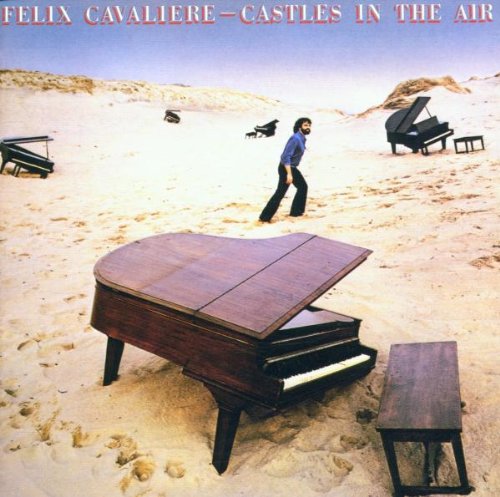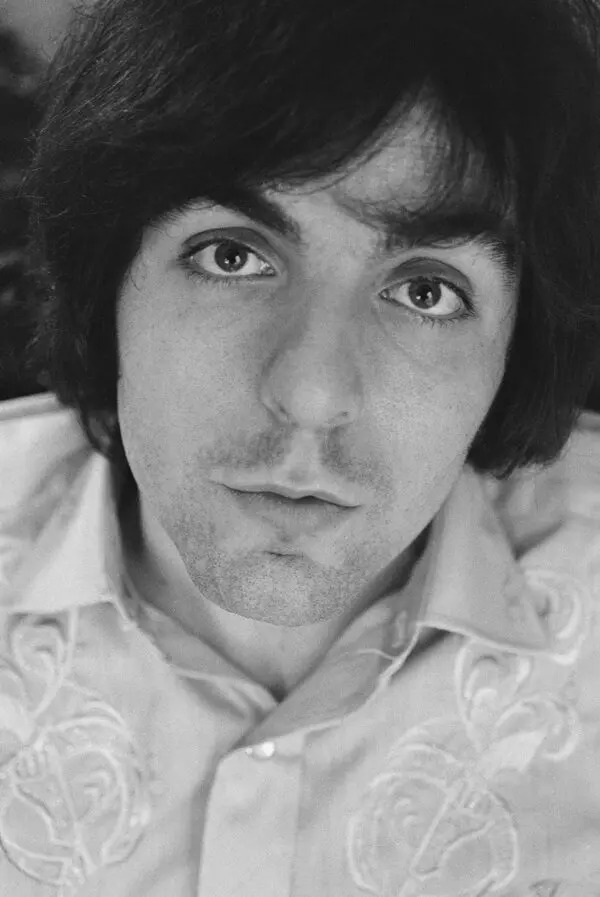By Russ
During the late 1960s, we were hearing on the radio a fresh new sound in pop music. We were listening to the grooves of a blue eyed soul group from Garfield, New Jersey, United States – initially called The Young Rascals. At least half a dozen hits would come into our consciousness during those heady times.
Songs like “Groovin’“, “It’s A Beautiful Morning“, “True Love“, “Good Loving“, “People Got To Be Free” would come over the air waves, with a soulful core R&B sound based on innovative use of jazz and Latin instrumental arrangements.
Mainly, two young songwriting individuals were at the heart of this group, guiding the direction of their rather short but successful career; Felix Cavaliere and Eddie Brigati.

“The Young Rascals” (1965-68)
Original quartet
- Felix Cavaliere – lead and backing vocals, keyboards (1965–1972, 1988, 2010, 2012–2013)
- Eddie Brigati – backing and lead vocals, percussion (1965–1970, 2010, 2012–2013)
- Gene Cornish – guitar, harmonica, backing and lead vocals; occasional bass guitar (1965–1971, 1988, 2010, 2012–2013)
- Dino Danelli – drums (1965–1972, 1988, 2010, 2012–2013; died 2022)
“The Rascals” (1968-72)
Unofficial members and later additions
- David Brigati – backing and occasional lead vocals (1965–1970)
- Robert Popwell – bass guitar (1970–1972; died 2017)
- Buzz Feiten – guitar (1970,1971–1972)
- Danny Weis – guitar (1970–1971)
VIDEOS
1966 / Good Lovin’
.
1967 / I’ve Been Lonely Too Long
.
1967 / How Can I Be Sure
.
1967 / Groovin’
.
1968 / It’s A Beautiful Morning
.
People Got To Be Free
Retrospective Medley of Rascals Hits
The Rascals — “People Got To Be Free” (with an intro from Felix Cavaliere)
.
The following writeup was written and fact-checked by The Editors of Encyclopedia Britannica which was last updated: Oct 24, 2023
Beginnings
The group’s members were all experienced musicians who had played with various bands before forming the Rascals in 1964.
Cavaliere, a classically trained pianist, had been the only white member of an R&B band in high school and had formed a doo-wop group in college.
Brigati had been a pickup singer with local R&B bands.
While he was a teenager, Danelli had played drums with jazz musician Lionel Hampton before turning to R&B.
Having met in New York, Cavaliere and Danelli relocated to Las Vegas, where they played with a casino house band. Upon returning to New York, Cavaliere briefly joined Joey Dee and the Starliters (famous for the hit “Peppermint Twist”), a band that included Brigati and (Canadian) guitarist Gene Cornish.
When Cavaliere, Brigati, and Cornish left the Starliters and joined up with Danelli, the group came together as the Rascals and began writing songs.
Hit-making popularity
In the mid-1960s the Rascals played gigs on the New York club scene, in New Jersey, and as the regular band on a floating nightclub off Long Island. New York promoter Sid Bernstein, who had brought the Beatles to the United States, took over as manager and signed them to Atlantic Records as the Young Rascals (they were compelled to add “Young” to their name to distinguish themselves from another group, the Harmonica Rascals).
In 1965 they opened for the Beatles at New York’s Shea Stadium. The Young Rascals’ first single, “I Ain’t Gonna Eat Out My Heart Anymore” (1965) was followed by “Good Lovin’ ” (1966), which soared to number one on the Billboard Hot 100 chart and earned them the first of several appearances on The Ed Sullivan Show. By this time they had taken to performing in Little Lord Fauntleroy–style outfits.
Over the next few years the band turned out a number of Top 40 hits, including “You Better Run” (1966, which peaked at number 20 on the Billboard Hot 100), “(I’ve Been) Lonely Too Long” (1967, number 16), “Groovin’ ” (1967, number 1), “A Girl Like You” (1967, number 10), “How Can I Be Sure” (1967, number 4), “It’s Wonderful” (1968, number 20), “A Beautiful Morning” (1968, number 3), and “People Got to Be Free” (1968, number 1), the last song written shortly after the assassinations of Martin Luther King, Jr., and Robert F. Kennedy.
The Young Rascals’ debut album, The Young Rascals (1966), went gold, as did their subsequent releases Collections (1967), Groovin’ (1967), Time/Peace: The Rascals’ Greatest Hits (1968), and Freedom Suite (1969). In 1968 they dropped the “Young” from their name and returned to being the Rascals.
Writing for the Rock & Roll Hall of Fame and Museum, Patti Smith’s longtime collaborator Lenny Kaye described the Rascals’ sound this way:
Thick slabs of Hammond B-3 organ, all furniture polish and drawbars and majesty; a chopping rhythmic guitar; a precise, almost clockwork sense of percussion; a vocalese whose tremolo vibratos as if doubling back on itself, riding a wave form of infinite shimmy. Pure show and go.
Stance Against Racism
While not an overtly political group, the Rascals took a clear stance against racism – you can hear that in their song “People Got To Be Free“. They insisted that a Black group share the bill with them during live concerts—a position that at the time cost the Rascals some concert dates in the southern United States.
Separate Ways
By the early 1970s the group was experiencing strain, and their record sales and concert attendance declined sharply. Eddie Brigati left the group in 1970; Gene Cornish left the following year.
Felix Cavaliere went on to pursue a solo career as a singer-songwriter and produced an album Castles In the Air in 1979.


In 1980 Cavaliere’s song “Only a Lonely Heart Sees” from the Castles album was released as a single in 1980. It was his only top 40 hit on the Billboard Hot 100, peaking at No. 36. It was also his only top 5 hit on the Adult Contemporary chart, peaking at No. 2.
Post-breakup tensions, reunion, and legacy
Although the remaining Rascals changed recording labels, moving from Atlantic to Columbia, and added several new performers to the lineup (guitarist Buzzy Feiten, formerly with the Paul Butterfield Blues Band; bass player Robert Popwell, who had worked with Bob Dylan and Aretha Franklin; and vocalist Ann Sutton, who had sung with Philadelphia-based soul and jazz groups), the band broke up in the early 1970s.
Brigati and his brother, David, recorded together; and Cornish and Danelli formed a new group called Bulldog that later evolved into Fotomaker (which included Wally Bryson, formerly of the Raspberries).
In 1988 Danelli, Cornish, and Cavaliere reunited for an American tour, though the following year they became embroiled in a lawsuit over use of the Rascals name. Cornish and Danelli ended up calling themselves the New Rascals, while Cavaliere billed himself as “formerly of the Young Rascals.”
In 1992 a two-CD career retrospective, The Rascals Anthology 1965–1972, was released.
In 1994 Cavaliere released his first solo album in more than a decade.
The Rascals were inducted into the Rock & Roll Hall of Fame in 1997.
In 2013 Steven Van Zandt, best known as a member of Bruce Springsteen’s E Street Band, reunited the four original members of the Rascals for Once Upon a Dream, a hybrid theatrical event that played on Broadway and then toured the country. The show featured a concert as well as taped segments that included interviews with the group and recreations by actors of important events from the band’s history.
Binging Section
Aside from Ringo, how many artists can you recognize in this video?
Album Discography
- The Young Rascals (1966)
- Collections (1967)
- Groovin’ (1967)
- Once Upon a Dream (1968)
- Freedom Suite (1969)
- See (1969)
- Search and Nearness (1971)
- Peaceful World (1971)
- The Island of Real (1972)






